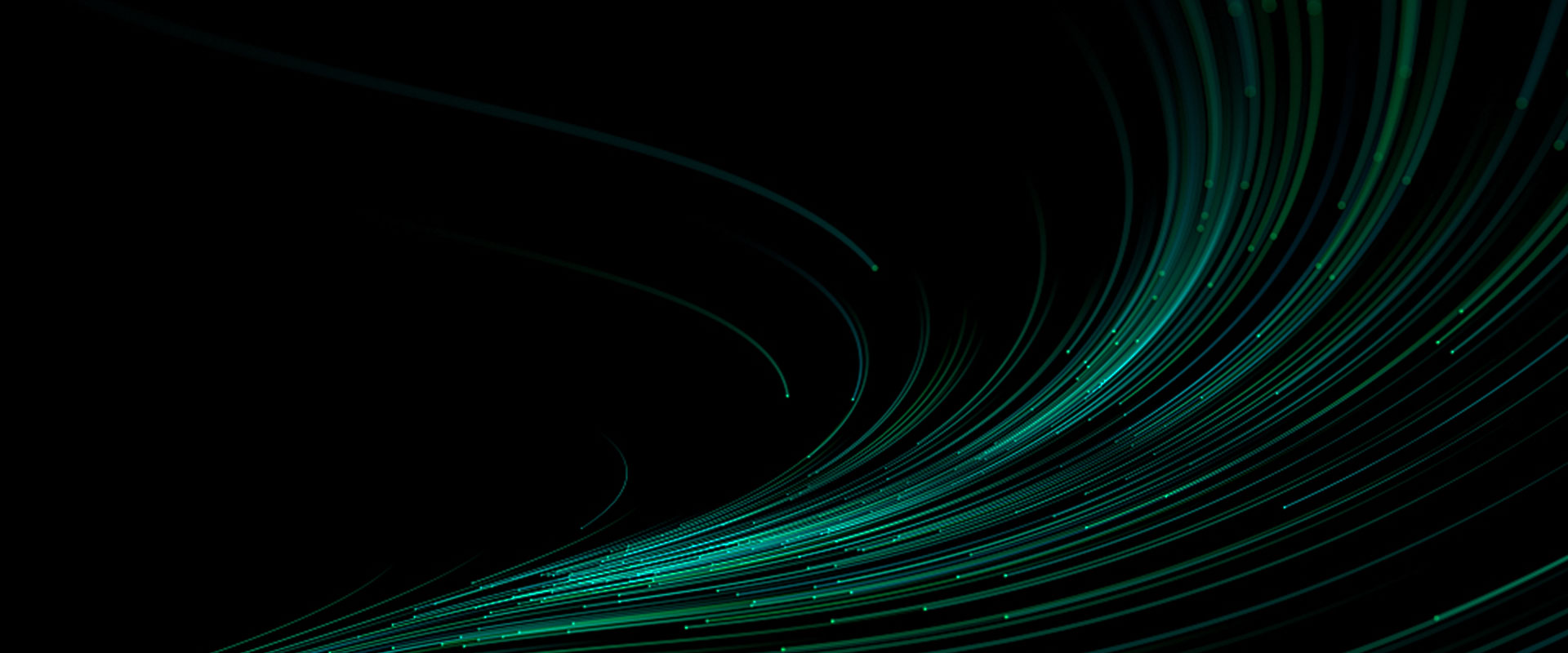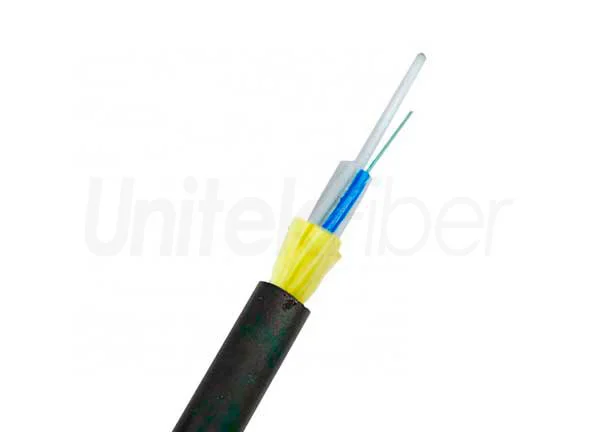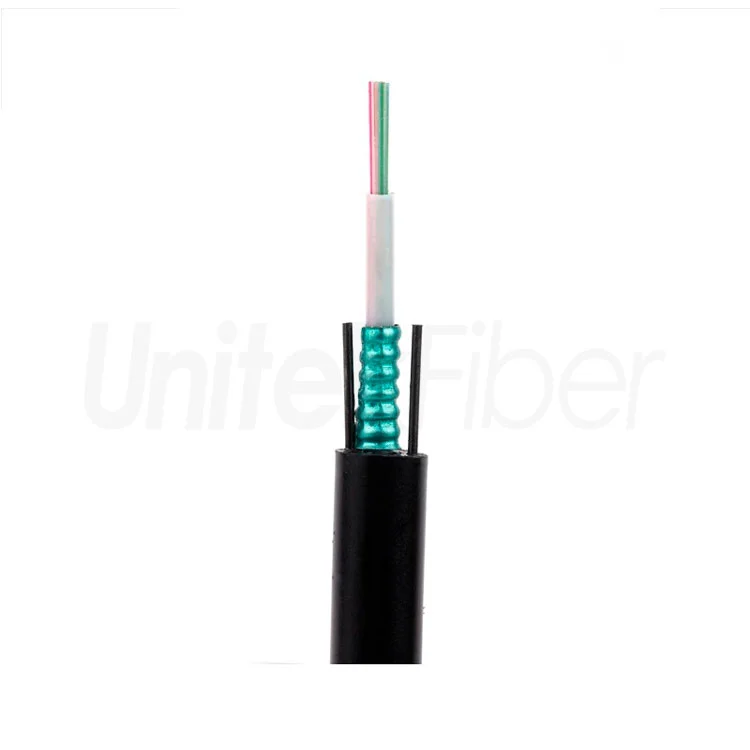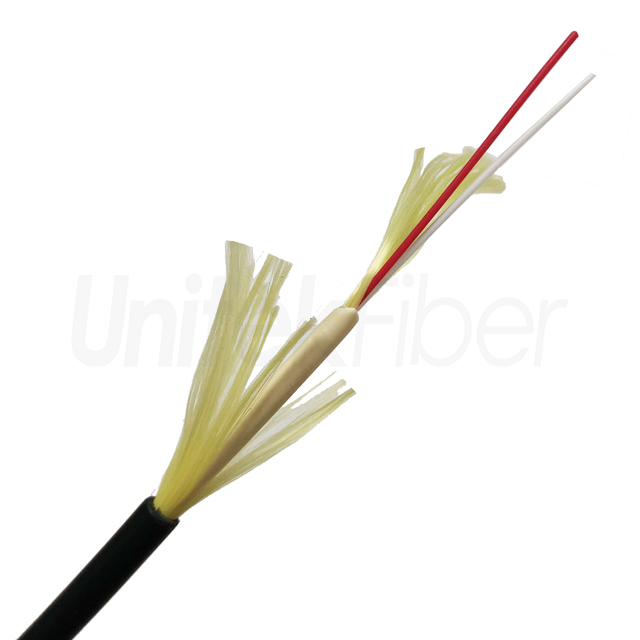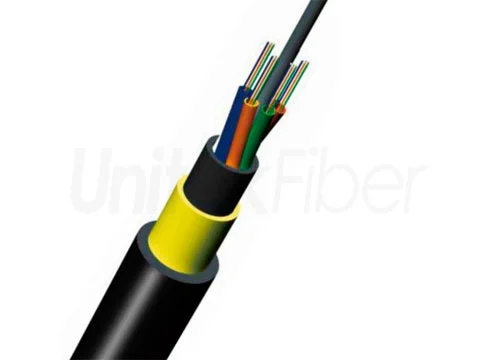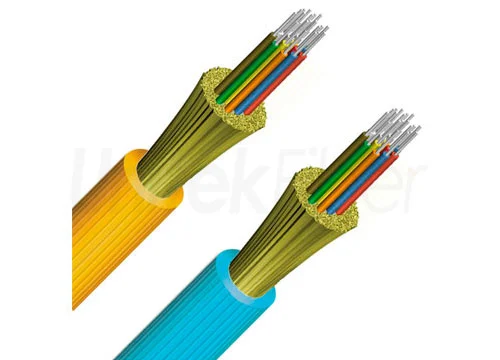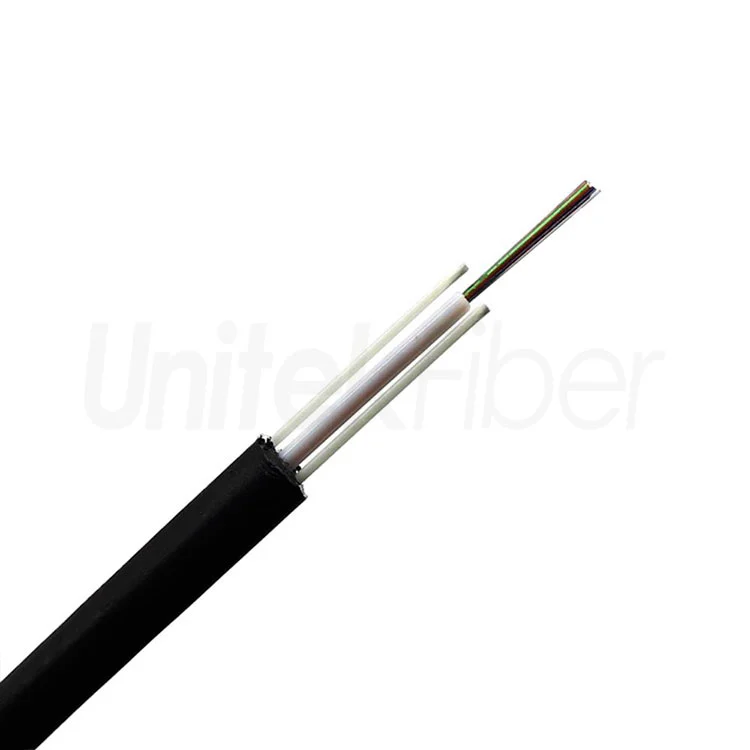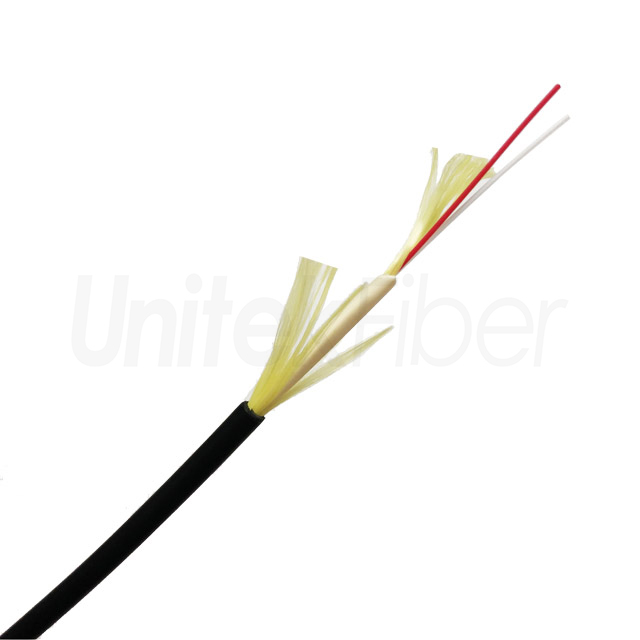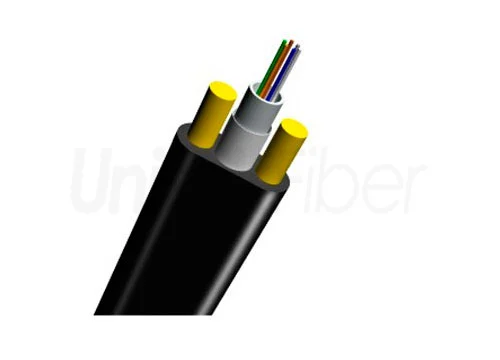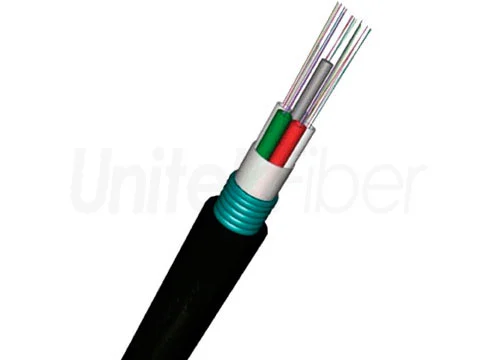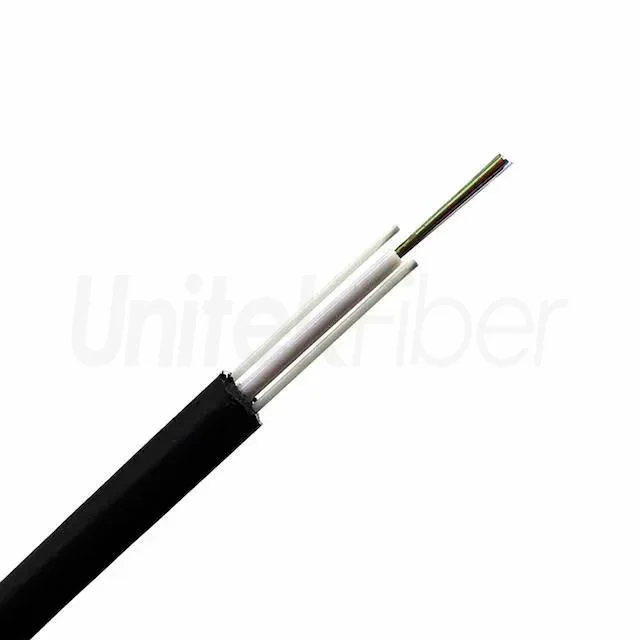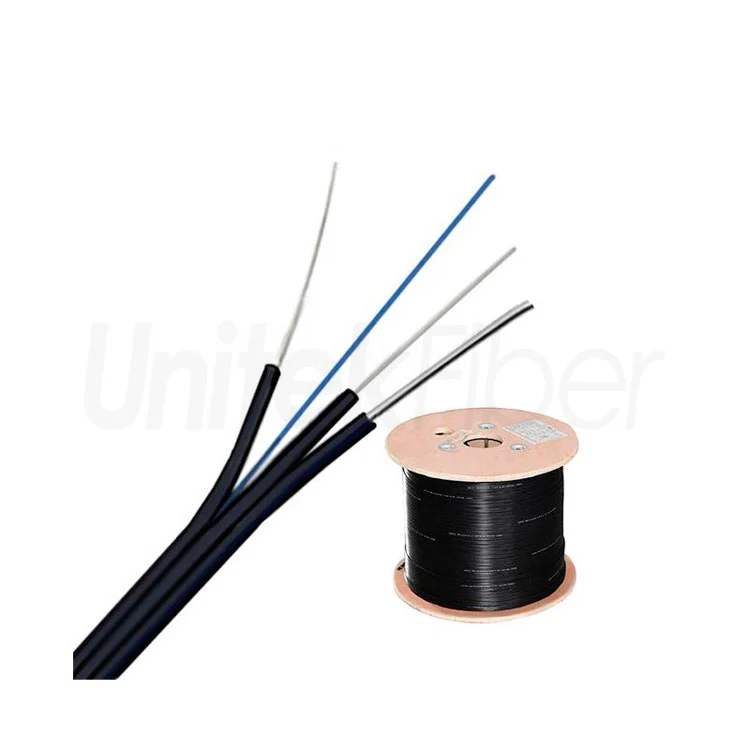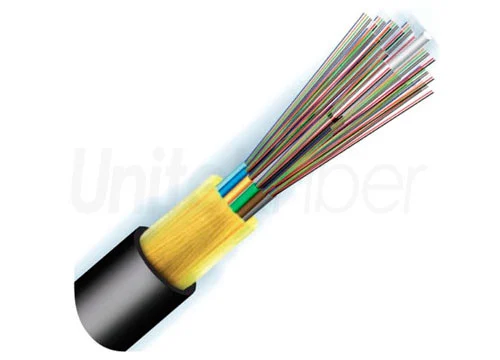
Fibre optic cables are widely used for high-speed internet connections, telecommunications, and networking. UnitekFiber as a professional fiber optic cable manufacturer, producing a comprehensive range of fiber optic cables, such as ADSS fiber cable, air-blown fiber optic cable, anti-rodent fiber optic cable, FTTH fiber drop cables, direct buried fiber optic cables and indoor fiber optic cables.
Fiber optic cable is the main transmission method of modern communication networks. It has a history of only about 20 years and has experienced three generations: short-wavelength multi-mode optical fiber, long-wavelength multi-mode optical fiber, and long-wavelength single-mode optical fiber. Optical fibre cable is used to transfer information via pulses of light, which pass along one or more transparent plastic or glass pipes. A fiber optic cable is a network cable that contains strands of glass fibers inside an insulated casing. A fiber optic cable can contain a varying number of glass fibers, from a few up to a couple hundred. Another glass layer called cladding surrounds the glass fiber core. The buffer tube layer protects the cladding, and a jacket layer acts as the final protective layer for the individual strand. Fiber optic cable technology is an effective cabled-based communication system. It is reliable, versatile, and widely used in many applications and industries.
UnitekFiber as a professional fiber optic cable supplier, we supply a comprehensive range of fiber optic cable. Such as ADSS fiber optic cable, air blown fiber optic cable, anti-rodent fiber optic cable, FTTH fiber drop cable, direct buried fiber optic cable and indoor fiber optic cable etc. And We will introduce more information regarding as how to choose the most suitable fiber optic cable in this part.
Aerial fiber optic cable is a type of fiber optic cable that is installed above ground, typically on poles. Aerial fiber optic cable is commonly used for secondary trunk lines and below, particularly in flat terrain or low-fluctuation areas. The installation process involves using existing aerial poles, which can greatly reduce construction costs and shorten the construction period.
UnitekFiber provide two type of aerial fiber optic cable: Self-supporting and Catenary. Among the self-supporting aerial fiber optic cables, figure 8 optical cable and ADSS self-supporting aerial fiber optic cables are widely used due to their easy and cost-effective installation. Different types of figure 8 optical cable and ADSS self-supporting aerial fiber optic cables are available to choose from UnitekFiber, including GYTC8S, GYXTC8Y, GYXTC8S, ADSS, ASU, GYFXTBY or etc
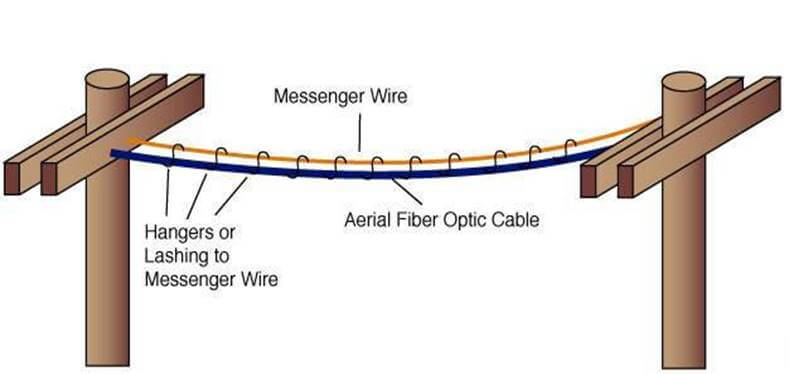
The laying of air blown fiber optic cable offers several advantages compared to other types of fiber optic cable. Firstly, the tension experienced by the fiber optic cable during the laying process is relatively uniform and significantly smaller. Additionally, the process of laying air blown fiber optic cable is simplified and fast. It allows for long-distance installation in a single operation, reducing the need for frequent joints and minimizing signal attenuation. Lastly, the use of this type of fiber optic cable enables convenient replacement with new and advanced fiber optic cable in the future. This ensures that the technology remains at the forefront and adapts to evolving market needs. The air blown fiber optic cable technology is a new way to make significant improvements in traditional fiber optic systems, facilitating the rapid adoption of fiber optic networks and providing users with a flexible, secure, cost-effective cabling system. UnitekFiber as a professional air blown fiber optic cable manufacturers, can supply GCYFTY and GCYFXTY air blowing fiber cable for small space of duct.

Duct fiber optic cable is specifically designed for installation in conduits or ducts. Duct fiber optic cable is commonly used in long-distance telecommunications networks and utility applications where the fiber optic cable needs to be protected from external factors. The most of use of duct fiber optic cable such as GYTA, GYTS, GYFTY, GYTA53, GYFTY53. UnitekFiber provide central loose tube and stranded loose tube type of duct fiber optic cable. The number of fibers is 2 up to 288 fibers. Duct optical cable has a structure consisting of optical fibers enclosed within loose tubes, strength members, water-blocking materials, an optional armored layer, and an outer sheath. Users can make corresponding requirements according to conditions of projects.

Direct buried fiber optic cable are a reliable option for outdoor communication and power transmission applications where underground installation is preferred. Direct buried fiber optic cables are buried directly underground without protection. Direct buried fiber optic cable has multiple layers of protection to withstand harsh conditions and hazards. Most direct buried fiber optic cable are unique in that they can withstand humidity, heat, and soil acidity in the soil. And the direct buried fiber optic cable also has the certain conductivity. UnitekFiber produce professional direct buried fiber optic cable, such as GYTA53, GYFTY53 and GYTA33. Usually, using double sheath and kevlar yarn for protection. And the high quality of metal armored provide more sturdy protection.
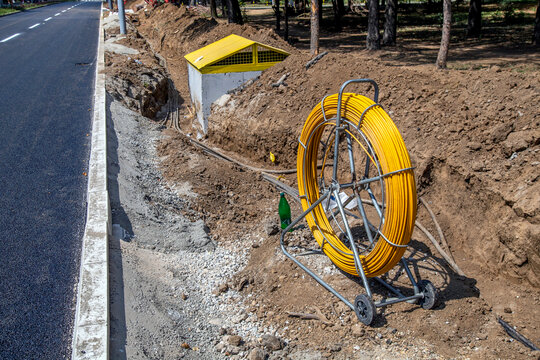
FTTH (Fiber to the Home) networks require different types of fiber optic cables for installation in various areas, including the indoor section, outdoor section, and transition in between. The drop fiber optic cable is a crucial part of the FTTH network, serving as the final external link between the subscriber's premises and the optical cable. UnitekFiber provide a series of fiber type, such as YOFC G652D and more flexible corning fiber G657A1 G657A2, ensuring the FTTH fiber optic could be used using where they need to be bent into the home. LSZH/PVC/PVC-OFNR/PVC-OFNP outer jacket, has good fire-resistance. The choice of jacket material depends on the specific application requirements, environmental factors, and safety regulations.
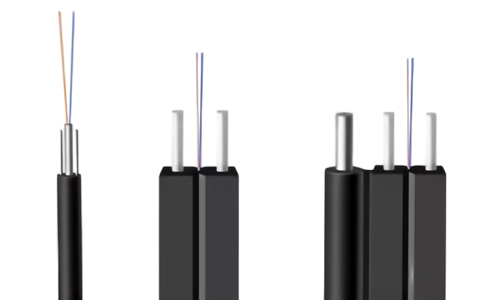
The indoor optical cable is the optical cable laid in the building, which is mainly used to connect communication equipment, computers, small switches and end user equipment in the building to transmit information, like GJDFJV and GJFJV. According to the type of optical fiber, indoor optical cables can be divided into single mode and multi-mode. According to the number of cores, fiber optic cable can be divided into simplex optical cable, duplex optical cable, distribution optical cable and breakout optical cable. Distribution fiber optic cables are typically smaller in size and lighter in weight. Several optical fibers are wrapped in a 0.9mm tight buffer tube with up to 288 cores. Indoor fiber optic cable jacket material can vary depending on the specific requirements of the installation. Flame ratings of tight buffered indoor fiber optic cables are available in Plenum(OFNP), Riser(OFNR), and General (LSZH).
Summarily, the significant impact of optical fiber communication technology on the Internet is also one of the core parts driving its continuous development. With the more extensive and scientific use of optical fiber communication technology, 5G communication technology enter the lives of ordinary people, and it will further change people's production and lifestyles. In addition, it is one of the key factors driving the sound development of society and the economy. Contact us to discover how our customized products can meet your specific requirements and elevate your network infrastructure. UnitekFiber are committed to providing you with the most professional fiber optic cable products.
Fiber optic cable is the main transmission method of modern communication networks. It has a history of only about 20 years and has experienced three generations: short-wavelength multi-mode optical fiber, long-wavelength multi-mode optical fiber, and long-wavelength single-mode optical fiber. Optical fibre cable is used to transfer information via pulses of light, which pass along one or more transparent plastic or glass pipes. A fiber optic cable is a network cable that contains strands of glass fibers inside an insulated casing. A fiber optic cable can contain a varying number of glass fibers, from a few up to a couple hundred. Another glass layer called cladding surrounds the glass fiber core. The buffer tube layer protects the cladding, and a jacket layer acts as the final protective layer for the individual strand. Fiber optic cable technology is an effective cabled-based communication system. It is reliable, versatile, and widely used in many applications and industries.
UnitekFiber as a professional fiber optic cable supplier, we supply a comprehensive range of fiber optic cable. Such as ADSS fiber optic cable, air blown fiber optic cable, anti-rodent fiber optic cable, FTTH fiber drop cable, direct buried fiber optic cable and indoor fiber optic cable etc. And We will introduce more information regarding as how to choose the most suitable fiber optic cable in this part.
Aerial fiber optic cable is a type of fiber optic cable that is installed above ground, typically on poles. Aerial fiber optic cable is commonly used for secondary trunk lines and below, particularly in flat terrain or low-fluctuation areas. The installation process involves using existing aerial poles, which can greatly reduce construction costs and shorten the construction period.
UnitekFiber provide two type of aerial fiber optic cable: Self-supporting and Catenary. Among the self-supporting aerial fiber optic cables, figure 8 optical cable and ADSS self-supporting aerial fiber optic cables are widely used due to their easy and cost-effective installation. Different types of figure 8 optical cable and ADSS self-supporting aerial fiber optic cables are available to choose from UnitekFiber, including GYTC8S, GYXTC8Y, GYXTC8S, ADSS, ASU, GYFXTBY or etc

The laying of air blown fiber optic cable offers several advantages compared to other types of fiber optic cable. Firstly, the tension experienced by the fiber optic cable during the laying process is relatively uniform and significantly smaller. Additionally, the process of laying air blown fiber optic cable is simplified and fast. It allows for long-distance installation in a single operation, reducing the need for frequent joints and minimizing signal attenuation. Lastly, the use of this type of fiber optic cable enables convenient replacement with new and advanced fiber optic cable in the future. This ensures that the technology remains at the forefront and adapts to evolving market needs. The air blown fiber optic cable technology is a new way to make significant improvements in traditional fiber optic systems, facilitating the rapid adoption of fiber optic networks and providing users with a flexible, secure, cost-effective cabling system. UnitekFiber as a professional air blown fiber optic cable manufacturers, can supply GCYFTY and GCYFXTY air blowing fiber cable for small space of duct.

Duct fiber optic cable is specifically designed for installation in conduits or ducts. Duct fiber optic cable is commonly used in long-distance telecommunications networks and utility applications where the fiber optic cable needs to be protected from external factors. The most of use of duct fiber optic cable such as GYTA, GYTS, GYFTY, GYTA53, GYFTY53. UnitekFiber provide central loose tube and stranded loose tube type of duct fiber optic cable. The number of fibers is 2 up to 288 fibers. Duct optical cable has a structure consisting of optical fibers enclosed within loose tubes, strength members, water-blocking materials, an optional armored layer, and an outer sheath. Users can make corresponding requirements according to conditions of projects.

Direct buried fiber optic cable are a reliable option for outdoor communication and power transmission applications where underground installation is preferred. Direct buried fiber optic cables are buried directly underground without protection. Direct buried fiber optic cable has multiple layers of protection to withstand harsh conditions and hazards. Most direct buried fiber optic cable are unique in that they can withstand humidity, heat, and soil acidity in the soil. And the direct buried fiber optic cable also has the certain conductivity. UnitekFiber produce professional direct buried fiber optic cable, such as GYTA53, GYFTY53 and GYTA33. Usually, using double sheath and kevlar yarn for protection. And the high quality of metal armored provide more sturdy protection.

FTTH (Fiber to the Home) networks require different types of fiber optic cables for installation in various areas, including the indoor section, outdoor section, and transition in between. The drop fiber optic cable is a crucial part of the FTTH network, serving as the final external link between the subscriber's premises and the optical cable. UnitekFiber provide a series of fiber type, such as YOFC G652D and more flexible corning fiber G657A1 G657A2, ensuring the FTTH fiber optic could be used using where they need to be bent into the home. LSZH/PVC/PVC-OFNR/PVC-OFNP outer jacket, has good fire-resistance. The choice of jacket material depends on the specific application requirements, environmental factors, and safety regulations.

The indoor optical cable is the optical cable laid in the building, which is mainly used to connect communication equipment, computers, small switches and end user equipment in the building to transmit information, like GJDFJV and GJFJV. According to the type of optical fiber, indoor optical cables can be divided into single mode and multi-mode. According to the number of cores, fiber optic cable can be divided into simplex optical cable, duplex optical cable, distribution optical cable and breakout optical cable. Distribution fiber optic cables are typically smaller in size and lighter in weight. Several optical fibers are wrapped in a 0.9mm tight buffer tube with up to 288 cores. Indoor fiber optic cable jacket material can vary depending on the specific requirements of the installation. Flame ratings of tight buffered indoor fiber optic cables are available in Plenum(OFNP), Riser(OFNR), and General (LSZH).
Summarily, the significant impact of optical fiber communication technology on the Internet is also one of the core parts driving its continuous development. With the more extensive and scientific use of optical fiber communication technology, 5G communication technology enter the lives of ordinary people, and it will further change people's production and lifestyles. In addition, it is one of the key factors driving the sound development of society and the economy. Contact us to discover how our customized products can meet your specific requirements and elevate your network infrastructure. UnitekFiber are committed to providing you with the most professional fiber optic cable products.
